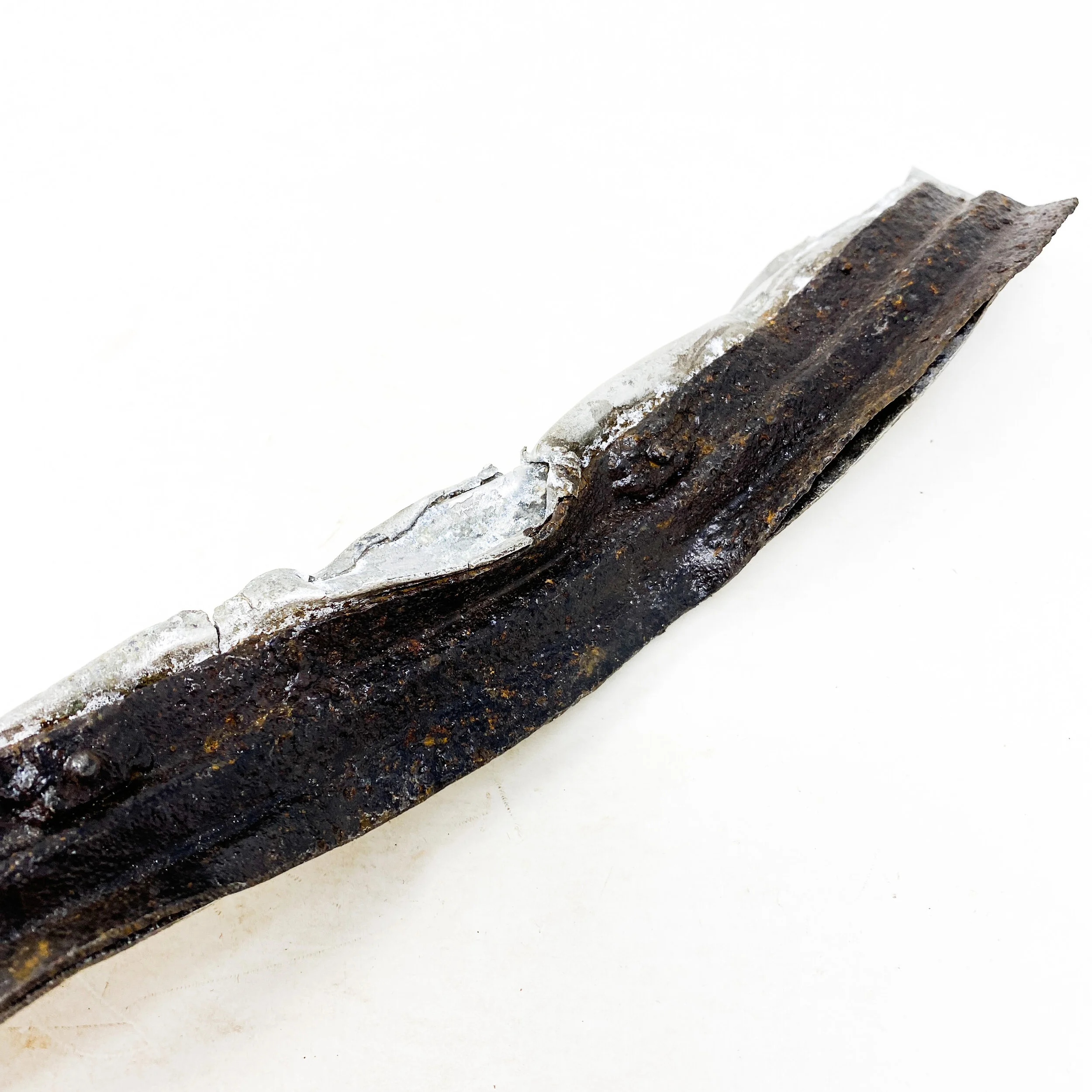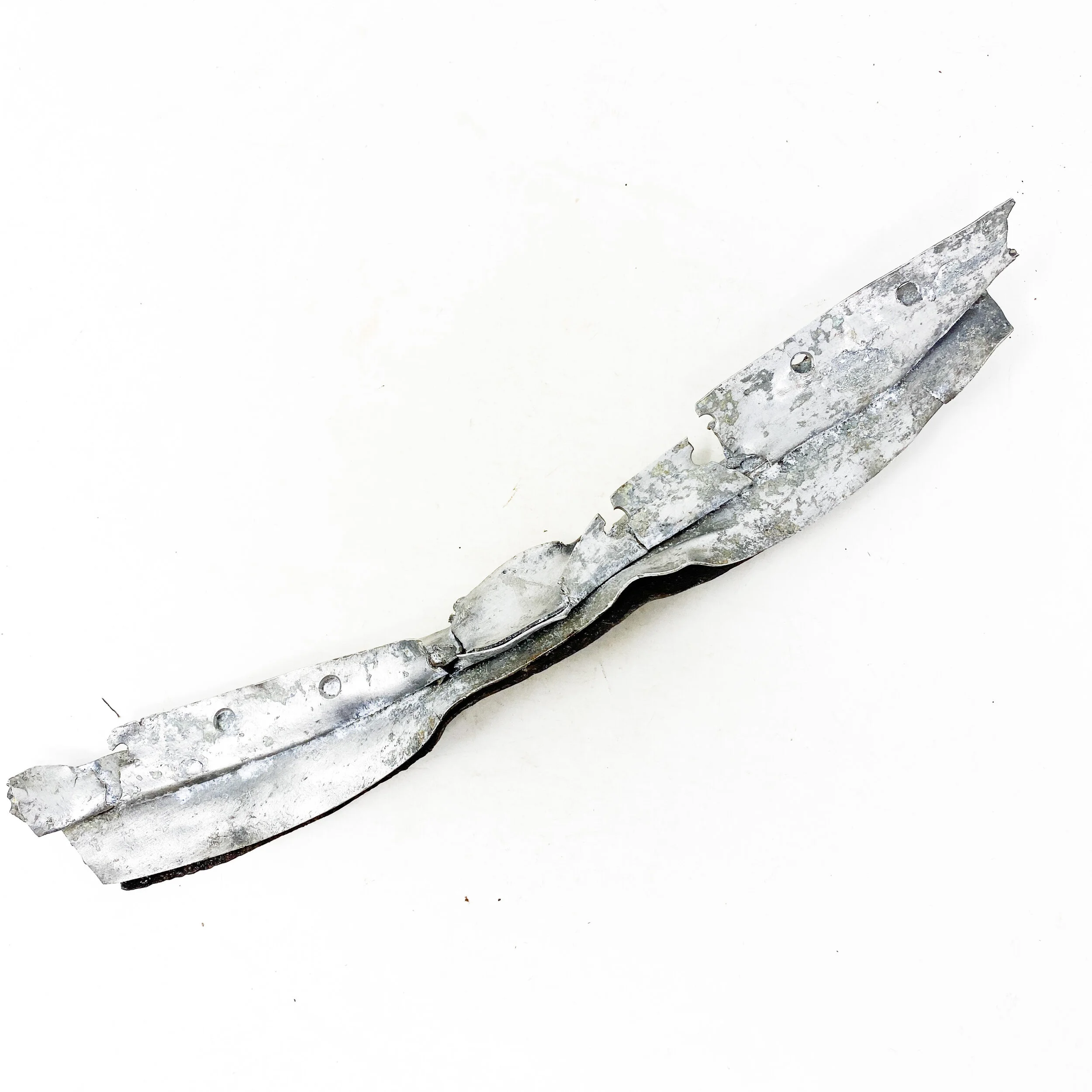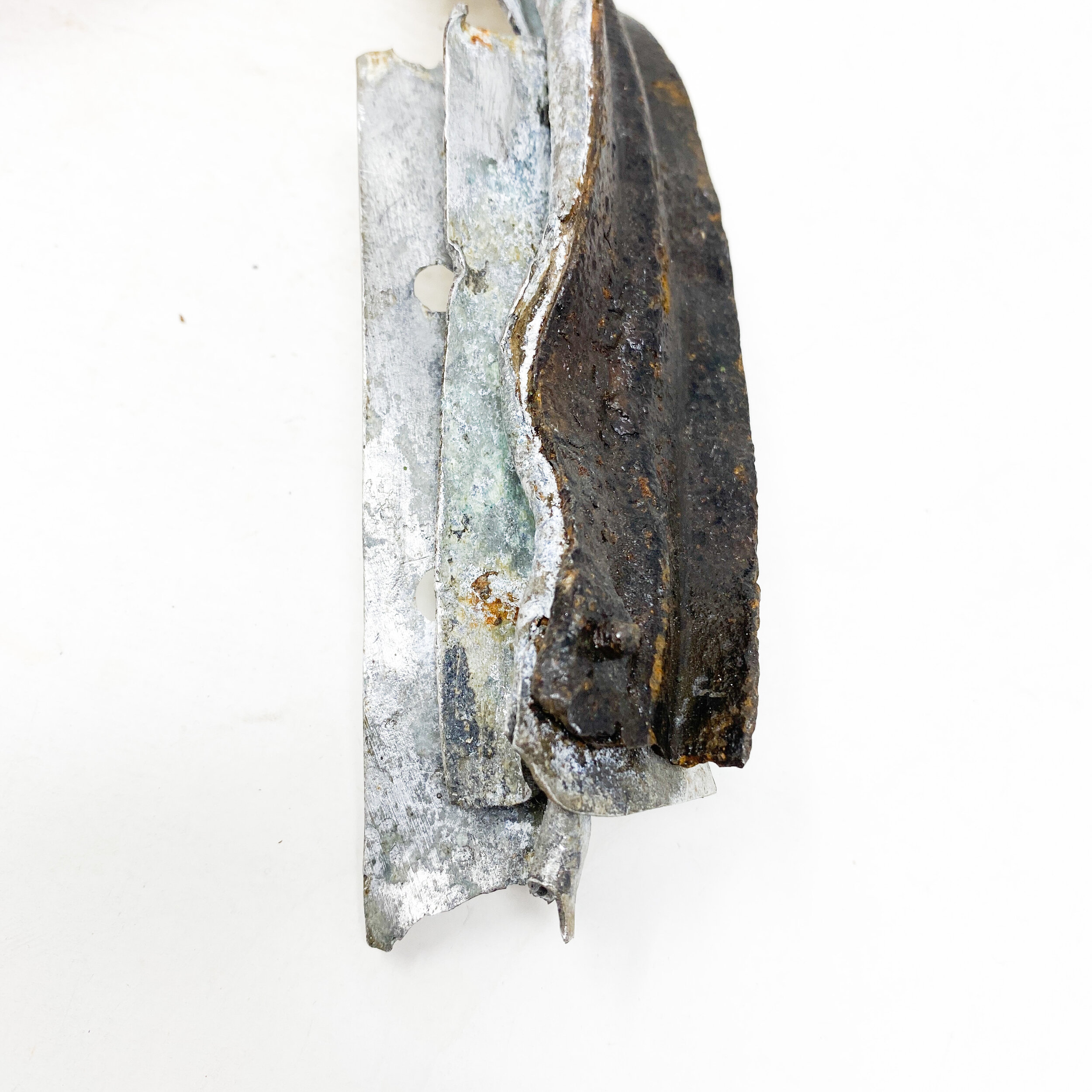German Luftwaffe Windscreen Canopy Relic from Downed Me110 Night Fighter











German Luftwaffe Windscreen Canopy Relic from Downed Me110 Night Fighter
This piece of shrapnel from a downed Me110 Night Fighter was brought back as a war souvenir from a soldier who pocketed it from a downed Messerschmitt Bf 110 in Hollerath, Germany. Measures around a foot long and still contains all of the original black otter paint and structure.
The Messerschmitt Bf 110, often known unofficially as the Me 110, is a twin-engine Zerstörer(Destroyer, heavy fighter) and fighter-bomber (Jagdbomber or Jabo) developed in Nazi Germanyin the 1930s and used by the Luftwaffe during World War II. Hermann Göring was a proponent of the Bf 110. It was armed with two MG FF 20 mm cannon, four 7.92 mm (.312 in) MG 17 machine guns, and one 7.92 mm (.312 in) MG 15 machine gun (later variants’ rear gunner station would be armed with the twin-barreled MG 81Z) for defense. Development work on an improved type to replace the Bf 110, the Messerschmitt Me 210 began before the war started but its teething troubles resulted in the Bf 110 soldiering on until the end of the war in various roles, with its replacements, the Me 210 and the significantly improved Me 410 Hornisse.
The Bf 110 served with considerable success in the early campaigns in Poland, Norway and France. The primary weakness of the Bf 110 was its lack of manoeuvrability, although this could be mitigated with the correct tactics. This weakness was exploited when flying as close escort to German bombers during the Battle of Britain. When British bombers began targeting German territory with nightly raids, some Bf 110-equipped units were converted to night fighters, a role to which the aircraft was well suited. After the Battle of Britain the Bf 110 enjoyed a successful period as an air superiority fighter and strike aircraft in other theatres and defended Germany from strategic air attack by day against the USAAF's 8th Air Force, until an American change in fighter tactics rendered them increasingly vulnerable to developing American air supremacy over the Reich as 1944 began.
During the Balkans Campaign, North African Campaign and on the Eastern Front, it rendered valuable ground support to the German Army as a potent fighter-bomber. Later in the war, it was developed into a formidable radar-equipped night fighter, becoming the main night-fighting aircraft of the Luftwaffe. Most of the German night fighter aces flew the Bf 110 at some point during their combat careers and the top night fighter ace, Major Heinz-Wolfgang Schnaufer, flew it exclusively and claimed 121 victories in 164 sorties.